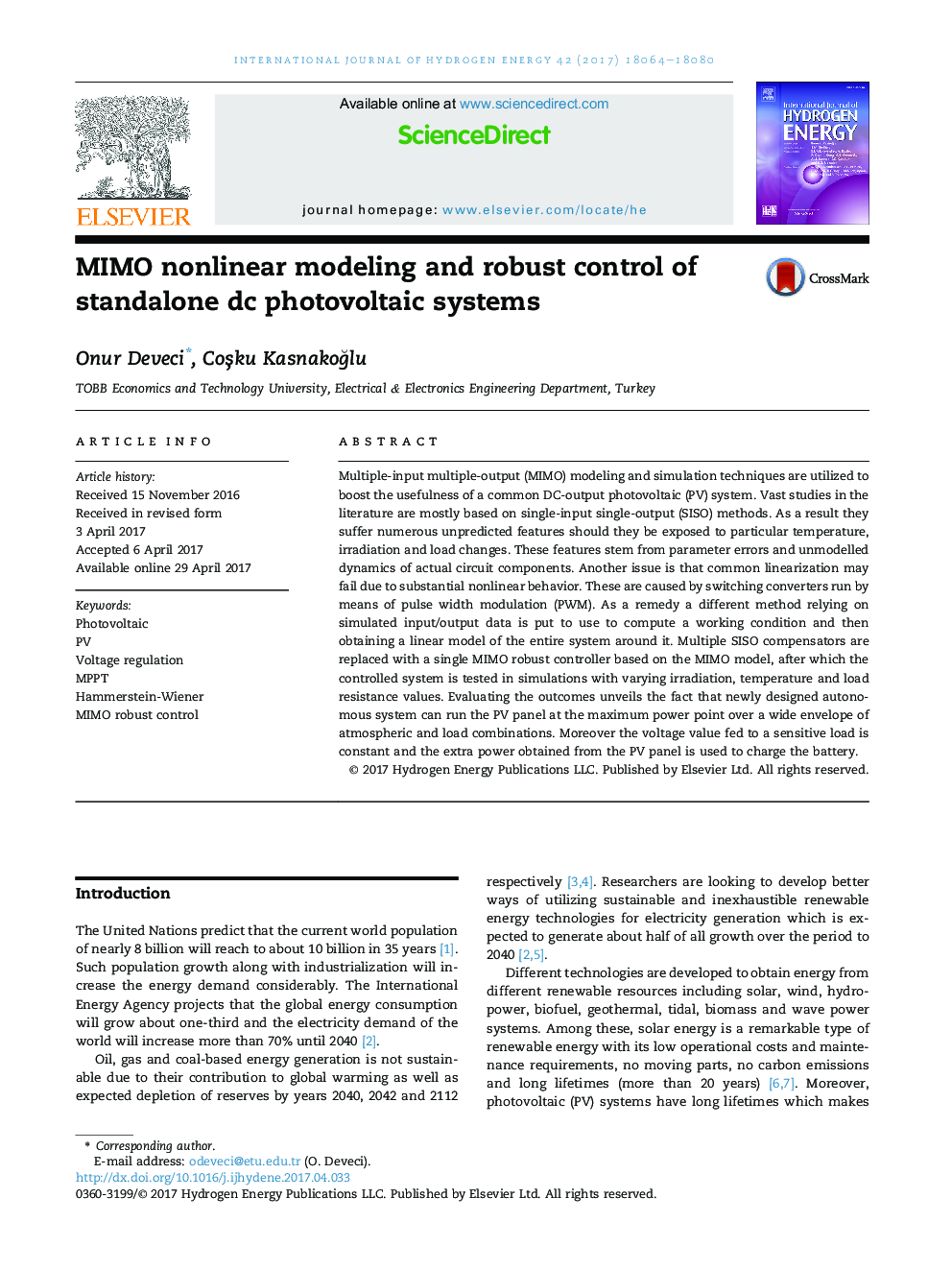| Article ID | Journal | Published Year | Pages | File Type |
|---|---|---|---|---|
| 5145444 | International Journal of Hydrogen Energy | 2017 | 17 Pages |
Abstract
Multiple-input multiple-output (MIMO) modeling and simulation techniques are utilized to boost the usefulness of a common DC-output photovoltaic (PV) system. Vast studies in the literature are mostly based on single-input single-output (SISO) methods. As a result they suffer numerous unpredicted features should they be exposed to particular temperature, irradiation and load changes. These features stem from parameter errors and unmodelled dynamics of actual circuit components. Another issue is that common linearization may fail due to substantial nonlinear behavior. These are caused by switching converters run by means of pulse width modulation (PWM). As a remedy a different method relying on simulated input/output data is put to use to compute a working condition and then obtaining a linear model of the entire system around it. Multiple SISO compensators are replaced with a single MIMO robust controller based on the MIMO model, after which the controlled system is tested in simulations with varying irradiation, temperature and load resistance values. Evaluating the outcomes unveils the fact that newly designed autonomous system can run the PV panel at the maximum power point over a wide envelope of atmospheric and load combinations. Moreover the voltage value fed to a sensitive load is constant and the extra power obtained from the PV panel is used to charge the battery.
Keywords
Related Topics
Physical Sciences and Engineering
Chemistry
Electrochemistry
Authors
Onur Deveci, CoÅku KasnakoÄlu,
